Our team of testers has been reviewing shoe after shoe with higher stack heights and even more cushion. So it’s no secret that max cushioned running shoes are truly having a moment right now. But the question on many minds is are max cushioned running shoes bad for us?
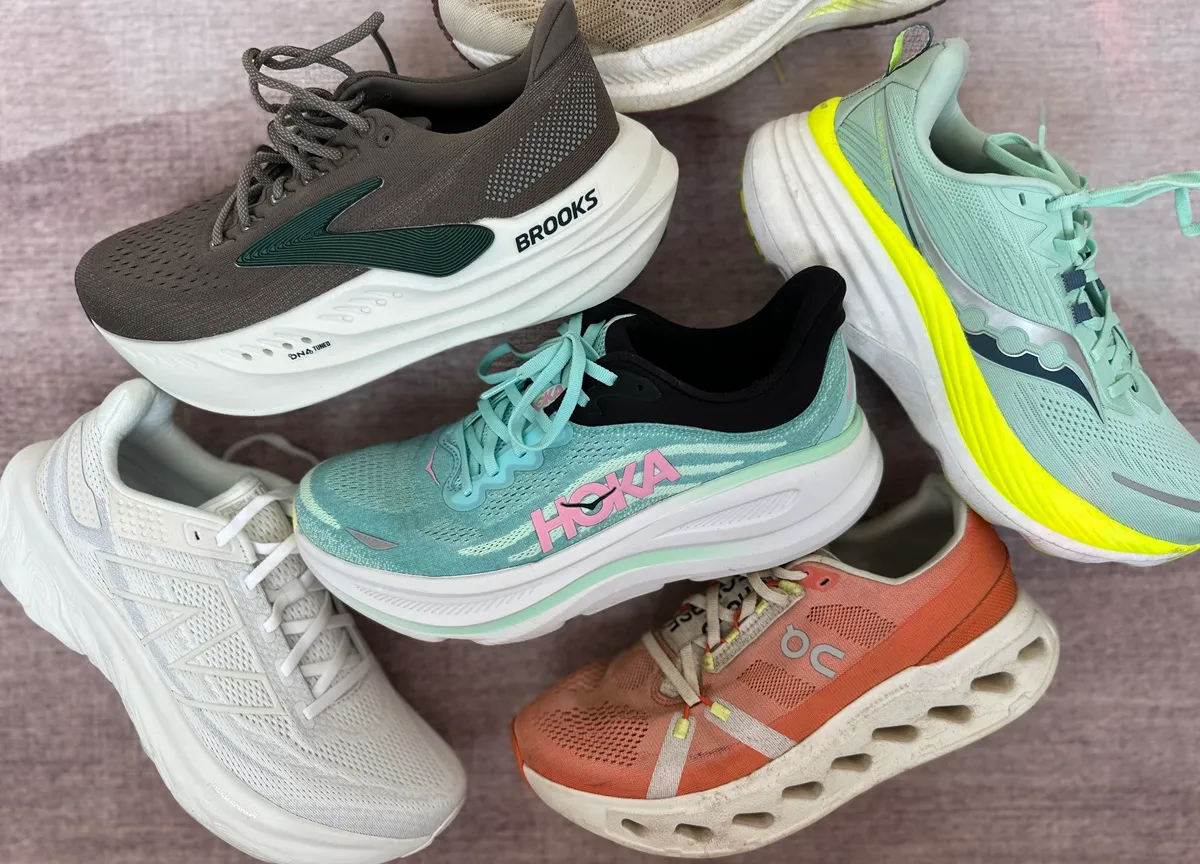
While we’ve been having a lot of fun with the max cushion, we wanted to know what does the data say? Is all that cushion hurting us? Changing our stride? Or giving us some extra impact protection? Keeping our legs fresher??
We went to the experts to find out what Physical Therapists, doctors, folks running lots of miles and any potential studies might say.
What’s Considered A Max Cushioned Running Shoe?
Let’s start here. This term has changed a lot over the years. The first max cushioned shoe was the Hoka Clifton and it was a mere 32mm compared to today’s towering mounds of cushion.
Stack height is referring from the ground to the top of the cushion in the heel (and also to the forefoot). Your heel drop is then the change from the heel to the toe.
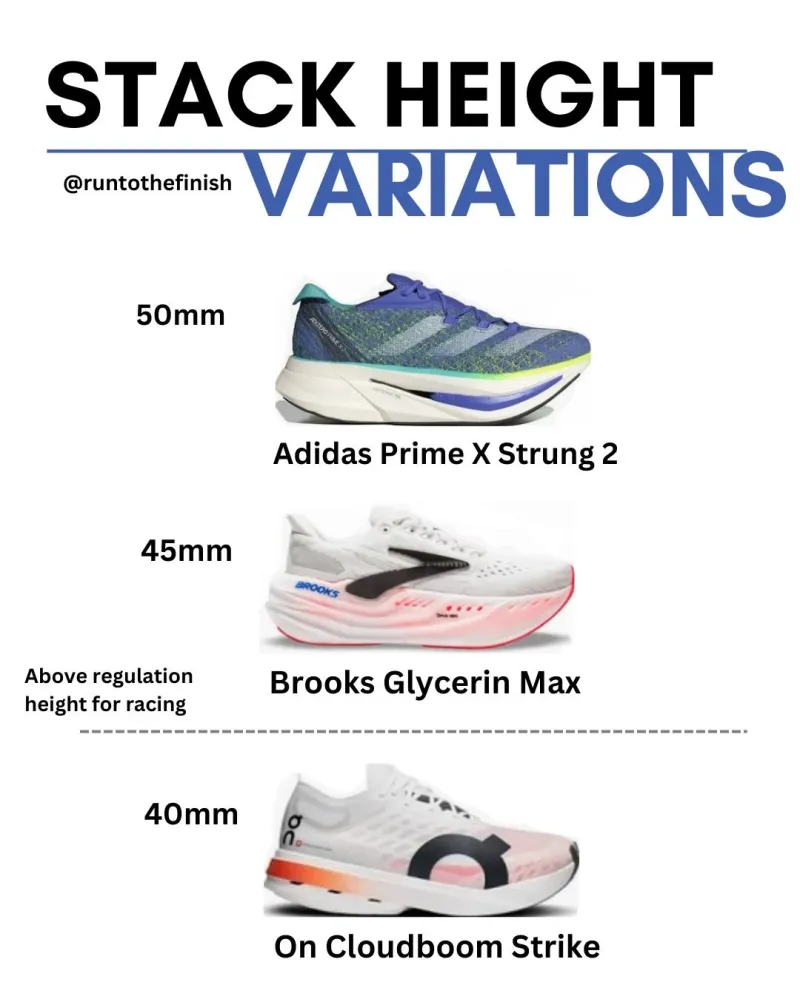
Stack height is the amount of cushioning material that separates your foot from the ground.
- Higher the stack height, the more cushioning and greater shock impact absorption the shoe provides.
- Lower stack height means less cushioning and a more direct ground feel.
There’s not one specific definition for a max cushioned running shoe, but it’s all certainly around the 40mm mark. That is the max height the World Athletics Association will allow for competitive athletes in a race.
Now you will see max stack heights consistently on most of the best carbon plated running shoes, but also in those that we recommend for recovery runs. It’s all about how the different types of running shoe foams are used and compiled in the shoe.
Do Max Cushioned Running Shoes Decrease Injuries?
No. Well that was short and sweet.
While our assumption is that anything which helps to reduce the impact of running on the body (cushion) should reduce injuries, that’s not really what we’re seeing.
Listen we need a lot more studies to give you more details. But right now shoes are changing so much faster than we can get data because studies often take 2-3 YEARS.
Are Max Cushioned Running Shoes Bad for You?
Max cushioned running shoes are being promoted as the pair to grab when you’re looking for extra comfort. Your muscles are sore and tired so if you can throw on a shoe to get some relief, it’s a no brainer right?
It’s not a simple yes or no answer.
When it comes to max cushioned running shoes, opinions and data vary on whether they’re good or bad for you.
This research study showed that max cushioned shoes can actually cause you to hit the ground harder and change your running form, creating higher loading on the legs.
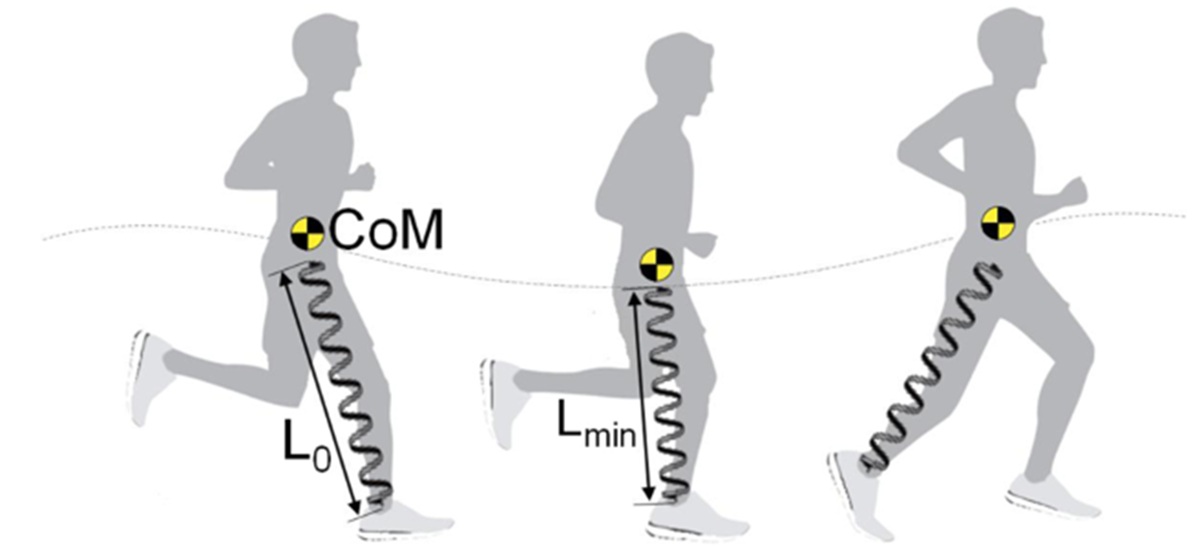
The extra foam and higher stack height almost create a buffer, making it difficult to be able to feel the ground, and potentially landing harder than you realize.
Physical Therapist, Dr. Caitlin Alexander, has seen a lot of injuries due to max cushioned shoes and here’s one of the main reasons.
“Many runners also believe that by putting more cushioning under the foot, you decrease the impact forces through your joints. But it’s actually the opposite. Impact and loading (particularly at the knees) increases in highly cushioned shoes.
We know that when you give runners cushioning, they actually strike the ground harder. “
What’s happening here?
- Lack of ground awareness may be slowing our reaction time to engage muscles
- Less full extension of the ankle joints
- Increased leg stiffness (not always a bad thing, see below)
- Potentially creating higher knee and hip loading
- Runners can adapt, but may need transition time just like a zero drop shoe
- Increases work load of ankles for stability (this is actually the biggest issue we’ve noticed in both testing and coaching)
This doesn’t mean you should toss out your max cushioned shoes! We’ve told you many times that the best shoe for you is the one that you enjoy and feel good in, that’s 100% backed by a study.
And what we know is that some shoes are going to not work for one person and be fantastic for another. So if you start testing a max cushion shoe and feel great, then it’s ok to keep in the rotation. We also know that your body learns to adapt to things over time, which leads to our first tip.
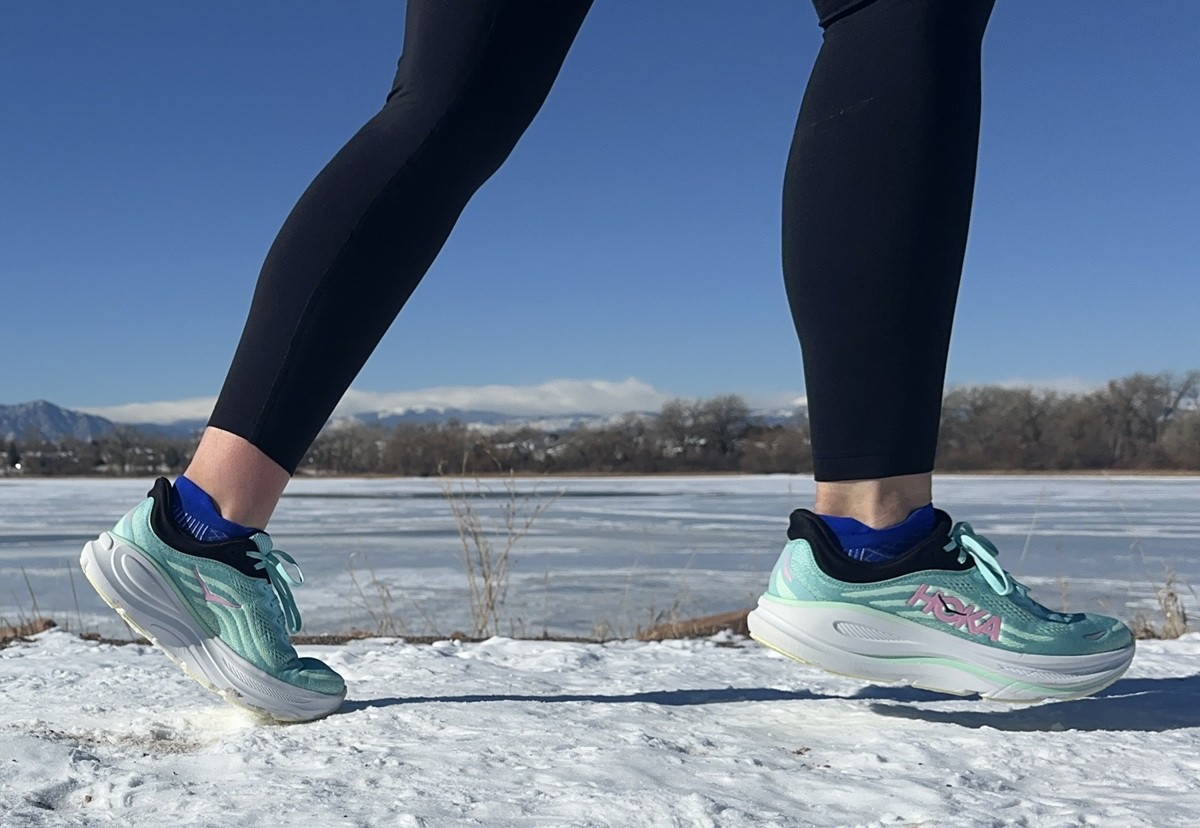
Don’t Increase Volume too Quickly
If you’re not used to training in a max cushioned running shoe, start slow and ease into them as you would with anything new. A few Drs have said the issue they feel is an increase in running volume to quickly due to the increased comfort.
Just as we tell you to slowly rotate in a zero drop, the same idea might be necessary here.
This sound obvious, but imagine that your legs do feel fresher after a run and therefore you run again the next day when you normally wouldn’t? Or you add on some miles when you normally wouldn’t.
We just don’t have enough data to say if they’re actually helping with recovery OR we’re getting that mental belief and therefore we feel better, so we do more!
Spend Time Training Your Feet and Ankles
Honestly, every single runner out there needs to be doing this already, but most aren’t. Your ankles aren’t just for stability, they are a spring that provides you with power and speed!
Your big toe contains tons of power when you know how to correctly push through and off the ground.
Remember, it’s what you’re doing outside of running that can help make a difference. Strengthening your feet and ankles can help you feel more stable, especially with the extra foam and higher stack height.
- Checkout some easy foot strengthening exercises for runners
- And grab a mini band for some ankle strengthening exercises for runners
- Don’t forget to strengthen your calves which are also working hard
A shoe alone won’t magically fix injuries or the added stress being placed on your joints, tendons and muscles. It’s about the balance of your shoes, strength work, and mobility.
Benefits of Max Cushioned Running Shoes
Listen if there wasn’t a benefit being found the the elite athletes winning marathons wouldn’t be sporting these super trainer shoes. This is where I think there’s some differences between the plush max cushioned daily trainer and the combo of bouncy foam and a carbon plate.
And tada, another reason you are likely seeing more shoes for the middle of the pack that are both cushioned and contain either a nylon plate or carbon plate. That stiffness helps to compensate for that lack of ground feel.
Leg Stiffness
In tests, we see an increase in leg stiffness. Which sounds bad, but IS A GOOD THING for running at high speeds.
Leg stiffness is crucial for storing and releasing elastic energy with every step, helping you run more efficiently.
The same study cited earlier about increased loading is one the flipside cites when talking about efficiency.
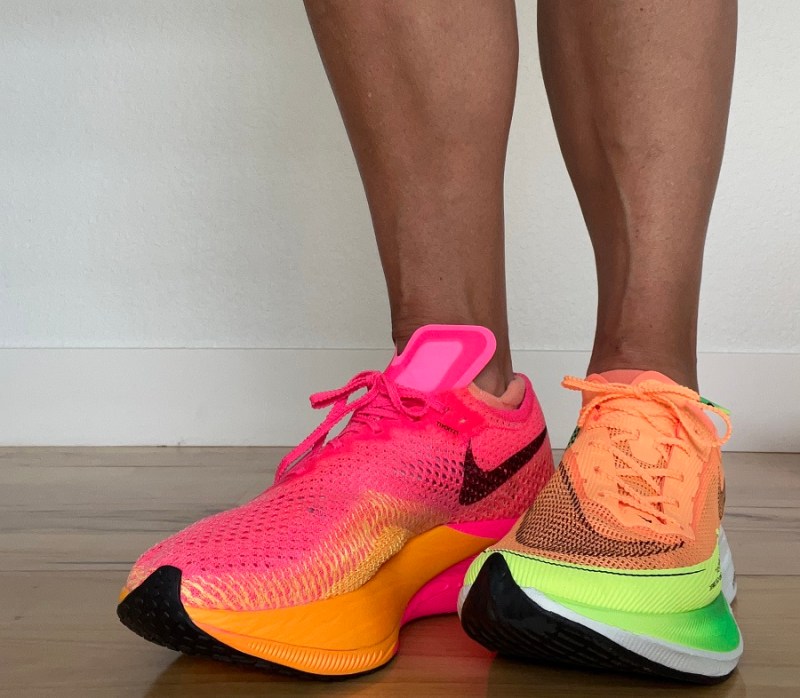
Mental Belief
Another recent study, showed that simply believing in the power of super shoes can make a difference.
Actual performance didn’t change, bu trunners who thought they were wearing the supershoes felt more comfortable, enjoyed their run more, and found the workout easier.
The twist? The shoes were identical—the only difference was the belief. This is a great reminder of how powerful our mindset can be in training and racing! Also known as the placebo effect, this was really fascinating to see in an actual study!!
Overall Enjoyment
Going back to our previous statement, it’s important to remember that a shoe you enjoy is huge. And as long as you’re willing to put in time with strength work and really being a smart runner who builds a base, then get on with your bad self.
We’ve chatted with other PT’s who have said there just isn’t one perfect amount of cushion for everyone.
Every brand is going to feel different depending on the foam, heel drop, and structure of the shoe.
We’ve seen it in our own testing. For example, the Brooks Glycerin Max feels a little more plush than the Asics Novablast 5 but they’re both still considered max cushion shoes!
Regular Cushion Vs Max Cushion
What’s the difference between regular cushion and max cushion running shoes? Let’s take a quick look.
Regular cushion shoes give you a bit more ground feel and versatility, making them great for everything from easy miles to picking up the pace. Max cushion shoes are all about soft, pillowy comfort, perfect mentally when your legs need a little extra love on long runs or recovery days.

The Brooks Glycerin Max and Nike Pegasus 41 are great examples of regular cushion vs. max cushion.
They’re both provide a smooth and cushioned ride for longer runs. However, there are slight differences between the two models.
- Glycerin Max will feel softer and more plush
- Pegasus will be more responsive and have a grounded feel
- Glycern Max stack height is 45 mm, Pegasus is 41mm
- Glycerin Max uses DNA tuned foam
- Pegasus uses ReactX foam, with Zoom Air pods in the forefoot, rearfoot
- Pegasus is perfect a variety of runs; Glycerin is perfect for longer and slower efforts
Some runners love that soft, cloud-like feel underfoot, while others prefer a bit more ground contact and responsiveness.
What do you think from your own experiences? Are max cushioned running shoes bad for runners? Have they helped you?
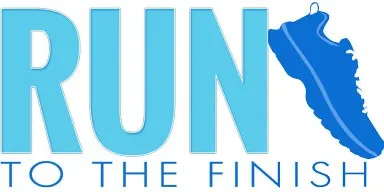

 10 Best Trail Running Shoes
10 Best Trail Running Shoes
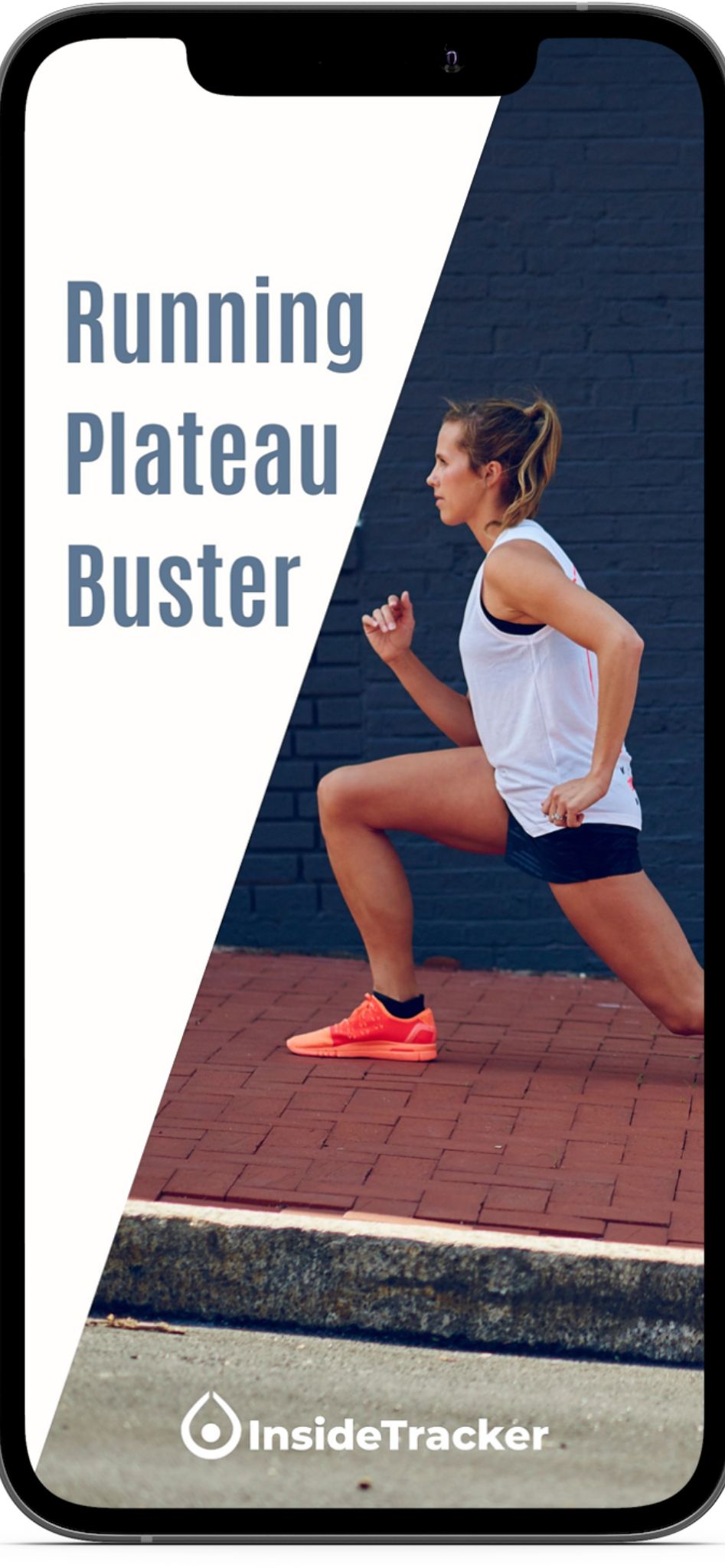
I work in a local running store, an 100% agree with you…the best shoe for you is the one that feels best! Personally, I’m all in on max cushion. I have Mortons Neuroma and running without a good slab of cushion underfoot is excruciating for me. I’m also coming back from back surgery last year and appreciate the comfort for my current very slow, but steady, pace.